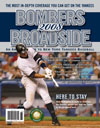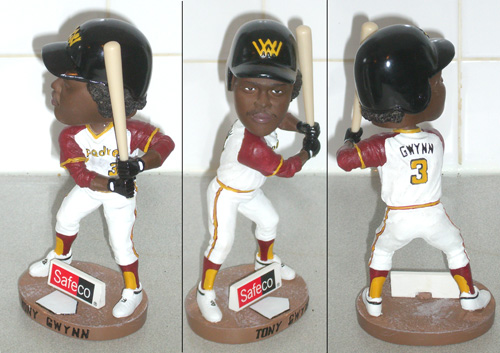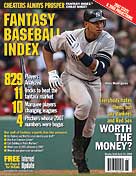In last Friday’s Prospectus Hit and Run, I took a look at the Yankees’ “decision” to shift Joba Chamberlain to the bullpen to start the season, making some ballpark estimates as to his workloads in the rotation and in relief and how they fit in with the team’s plans:
So, the recent Yanks [2005-2007] have averaged about 123 starts per year from their top five, leaving 39 starts to be absorbed by the rest of the staff. Even if they were to play towards the high side of that time span, 136 starts, those extra 26 are more than one extra pitcher can be expected to absorb. Of that surplus, how many can we expect Chamberlain to make?An aggressive estimate might put him at about 15 starts, leaving the Yanks to come up with another dozen or two from among the Jeff Karstens/Darrell Rasner/Kei Igawa/TBNL herd. Suppose Chamberlain pitches on a 180-inning pace as a starter for three months of the year, and takes the guise of a heavy-use 90-inning reliever for the other three months. In his starter phase, he could total 15 starts averaging six innings per start (90 innings) and as a reliever, he’d average an inning every other day (45 innings). That would put Joba at 135 innings, not far off from his Rule of 30 target. Of course, that wouldn’t leave a ton of headroom for October, if the Yankees get there. One can’t determine whether the team might want him to be part of their front four, or to return to the set-up role without knowing the rest of the staff’s strengths and weaknesses at that point in time. Either way has its merits so long as he can usurp a greater percentage of innings than the regular season, but both have their drawbacks as well.
From there I took a look at Chamberlain’s performance in relief last year using BP’s Reliever Expected Wins Added stat (WXRL), which measures the incremental impact, in wins, of a reliever’s performance based on the changes in score margin and game state (runners on base and number of outs) when he arrives and departs. Joba was 1.85 wins above replacement level in his 24 innings last year; on a per-inning basis, only Cleveland’s Rafael Betancourt had more of an impact, and all Betancourt did was set a record among the subgroup of nonclosers that I’m calling MISERs (Maximum-Impact Setup Relievers, crudely defined as pitchers with at least 1.0 WXRL and fewer than six saves in a season). The leaderboard for 2007:
Pitcher Team IP WXRL WX/9
Rafael Betancourt CLE 79.1 6.845 0.777
Joba Chamberlain NYA 24.0 1.848 0.693
Hideki Okajima BOS 69.0 4.429 0.578
Mike Gonzalez ATL 17.0 1.079 0.571
Heath Bell SDN 93.2 5.656 0.543
Brandon Lyon ARI 74.0 4.357 0.530
Zack Greinke KCA 53.1 3.114 0.525
Carlos Marmol CHN 69.1 3.694 0.480
Rafael Perez CLE 60.2 3.142 0.466
Pat Neshek MIN 70.1 3.572 0.457
J.C. Romero 2TM 56.1 2.822 0.451
Bobby Seay DET 46.1 2.303 0.448
Akinori Otsuka TEX 32.1 1.566 0.436
Tony Pena ARI 85.1 4.103 0.433
Ehren Wassermann CHA 23.0 1.075 0.421
Henry Owens FLO 23.0 1.051 0.411
Chad Qualls HOU 82.2 3.608 0.393
Derrick Turnbow MIL 68.0 2.752 0.364
Matt Herges COL 48.2 1.927 0.356
Justin Speier ANA 50.0 1.950 0.351
Scott Downs TOR 58.0 2.260 0.351
By comparison, Mariano Rivera’s WXRL/9 was 0.467, which ranked 20th in the majors. Still, as good as Chamberlain’s performance was, 24 innings is a pretty small sample size to base many conclusions on, so when I retroactively computed leaderboards for the seasons 2001 to 2006, I raised the bar to 40 innings to allow the occasional LOOGY or midseason callup to sneak through. What the rankings show is that the Yanks have been fairly deficient in this department recently. Here are the qualifying Yankees dating back to 1996:
Pitcher Team Year IP WXRL WX/9 Rk
Mariano Rivera NYA 1996 107.7 6.876 0.575 1
Mike Stanton NYA 1997 66.7 3.541 0.478 2
Ramiro Mendoza NYA 1999 84.0 2.385 0.256 27
Mike Stanton NYA 1999 58.3 1.480 0.228 34
Jason Grimsley NYA 1999 75.0 1.608 0.193 41
Jeff Nelson NYA 2000 69.7 1.534 0.198 35
Mike Stanton NYA 2001 80.3 3.333 0.373 10
Jay Witasick NYA 2001 40.3 1.037 0.231 32
Ramiro Mendoza NYA 2002 91.7 1.621 0.159 44
Chris Hammond NYA 2003 63.0 1.954 0.279 21
Tom Gordon NYA 2004 89.7 6.438 0.646 1
Paul Quantrill NYA 2004 95.3 1.546 0.146 51
Tom Gordon NYA 2005 80.7 3.269 0.365 11
Scott Proctor NYA 2006 102.3 1.833 0.161 49
Luis Vizcaino NYA 2007 75.3 2.081 0.249 35
Kyle Farnsworth NYA 2007 60.0 1.142 0.171 51
Since Mo ascended to the closer role, only Mike Stanton and Tom Gordon have cracked the majors’ top 20 in a given season. For a team spending as much money on its bullpen as the Yankees have, that’s no relief. And it’s yet another reason why sending Chamberlain to the bullpen for at least part of the year makes sense.



